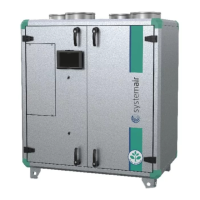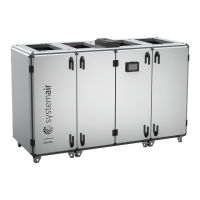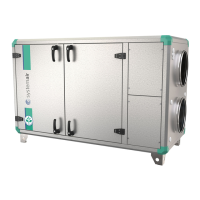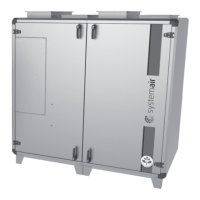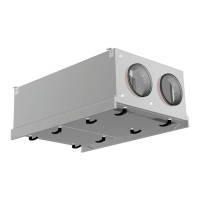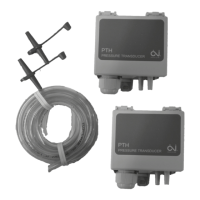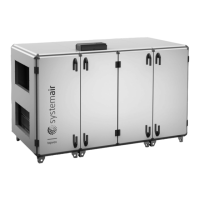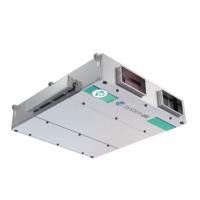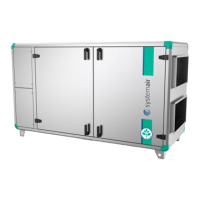Troubleshooting |
25
6 Troubleshooting
Should problems occur, please check or correct the following before contacting your service representative. Always
check if there are any alarms active in the control panel.
1. Fan(s) do not start
• Check if there are any alarm messages
• Check that the fuses are not defect (figure 4)
• Check the settings in the control panel (times, week schedule, auto/manual operation etc.)
2. Reduced airflow
• Check the settings for medium and low fan speed
• Check that the outdoor/exhaust air damper (if used) opens
• Check if filters need changing
• Check if diffusers and louvres need cleaning
• Check diffuser/louvre openings
• Check if fans and exchanger block need cleaning
• Check if the roof unit or air intake is clogged
• Check ducts for visible damage and/or build up of dust/pollution
3. Cold supply air
• Check the control temperature on the control panel
• Check if the overheating thermostat has tripped. If necessary press the red button, on the electrical heater (figure
4).
• Check if the extract filter must be changed
• Check if the fans have stopped due to overheating. If so the thermal contact might have tripped (shows as Fan
alarm in the control panel).
4. Noise/vibrations
• Check that the unit is completely leveled
• Clean the fan impellers
• Check that the screws holding the fans are tightened properly
6.1 Alarms
The alarm button (pos.1, figure 5) opens the alarm queue. When pressing this button active and non-acknowledged
alarms will be displayed in the menu window. The alarm-LED (pos.2, figure 5) is flashing if there are non-acknowledged
alarms and steady if the alarms are still active but have been acknowledged. If there are multiple alarms, use UP/DOWN
to move between them. An alarm can be acknowledged or blocked by using OK and UP/DOWN. To abort and go back
to start menu press cancel and then press LEFT.
See Commissioning record for an overview of possible alarms.
124455 | A003

